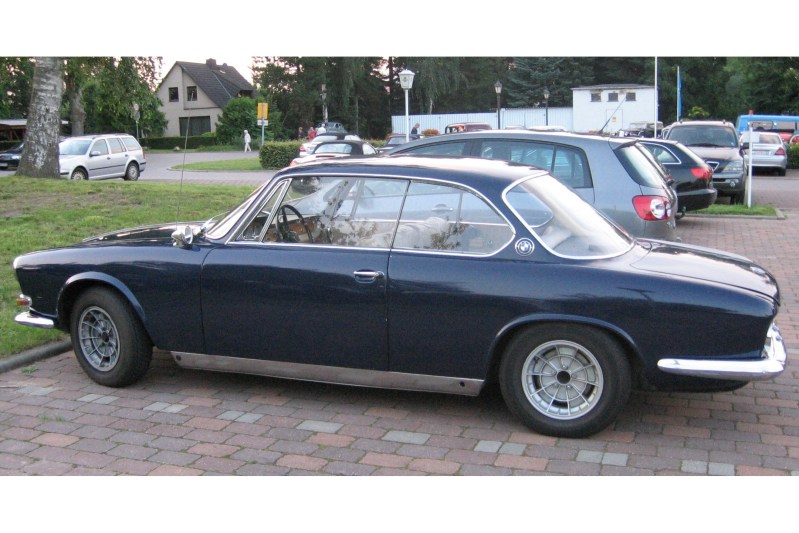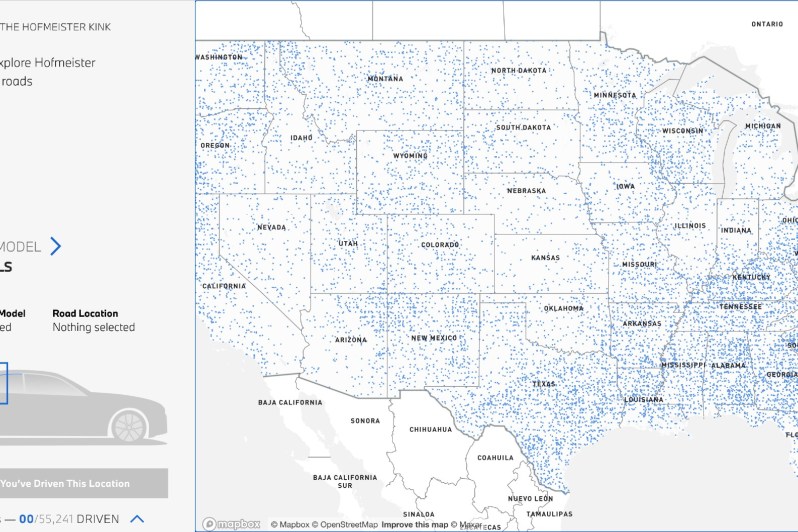Hidden designs on everyday products lurk everywhere. You may have heard of the ‘31’ lurking in the middle of the Baskin Robbins logo, or the FedEx arrow pointing, “Thataway!” between the ‘Fed’ and the ‘Ex.’ You may even have heard the myth that the ‘BMW’ symbol represents flying propellers as the German firm emerged from a renaming of the aircraft engine manufacturer Rapp Motorenwerke in 1917. (It doesn’t — the blue and white quarters actually represent BMW’s home state of Bavaria.) What only true auto nerds know is that auto manufacturer BMW has another secret symbol: the Hofmeister Kink.
Now, German auto aficionados can experience their car’s fine dynamics by accelerating through 55,241 (and counting) Hofmeister Kink-shaped roads throughout the United States, accessed through the BMW app.
Who was Hofmeister and why was an iconic kink named after him? Wilhelm Hofmeister was BMW’s chief of design from 1955 through 1970. BMW credits the engineer with designing both the BMW 3200 CS and the BMW 1500, each of which was featured at the 1961 Frankfurt Motor Show. Each of these new models sported Hofmeister’s distinct kink. Seeing as these makes shaped BMW design for the rest of the 20th century and helped establish the company as a leader in the sports sedan category, the legend and the legacy of Hofmeister’s kink lives on through to today.

What is the Hofmeister Kink?
This aerodynamic curve is the German auto maker’s proprietary representation of forward propulsion via rear-wheel drive. Wrapping around the baseline of the back-most pillar and framing the rear window, the Hofmeister Kink has been featured on every BMW-manufactured model since the appearance of its Neue Klasse models in 1961. An indicator of “rear-wheel performance and forward momentum,” the Hofmeister Kink has appeared on 105 different BMW models.
How can I drive BMW’s Hofmeister Kink?
To celebrate 60 years of the Hofmeister Kink, BMW turned to 2022 AI technology. Programmers developed a convolutional neural network AI to recognize and understand the unique shapes of 46 distinct Hofmeister Kinks found on BMWs over the last six decades. (A ‘convolutional neural network’ is a Deep Learning algorithm that can take in an input image and assign it importance according to various aspects or objects and differentiate one from the other, thus mapping an image network.)
Next, developers trained computer vision technology to search U.S. road networks for curves matching each Hofmeister Kink. After over 55,000 corresponding asphalt and concrete bends were identified, engineers uploaded the results into a searchable app, available on the web and on the My BMW app.

All BMW app users have to do is search the interactive map for Hofmeister Kink-shaped roads, track the ones driven, and begin to build your stats, marking how many of the thousands of U.S. Hofmeister Kinks their German auto has ripped through.



